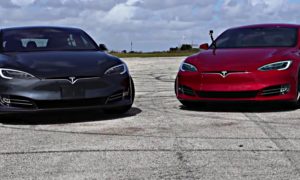Lifestyle
Why do people compare Fisker to Tesla?

On my way back from a great Memorial Day weekend trip to Mystic, CT for some “lobstah”, we played tag with a Fisker Karma with NY plates. We got to see the front, back and sides of the car in all it’s glory, and I must say it’s a pretty smart looking car aside from the plain backside. I knew that Fisker had gone bankrupt and the defunct battery startup A123 which supplies batteries to the car had been bought by a Chinese billionaire, but other than that I didn’t know much about the car or the company. So, while driving back my wife started started googling and reading the information to me. 
The Fisker
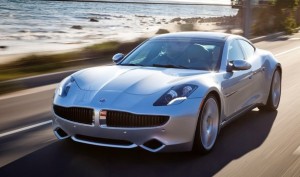 The first question we had while peering at the car through our peripheral visions was how the Fisker driver managed to make its way up here from NY? The answer is that while wikipedia calls the Fisker Karma an electric vehicle, it’s really a hybrid. There’s a whole area of research and writing on hybrids that I won’t get into. The interesting part is around terminology. If you run only on electric and use gas to power an electric generator, then how can you get by calling the vehicle an EV when you’re burning gas most of the time. Who are they fooling?
The first question we had while peering at the car through our peripheral visions was how the Fisker driver managed to make its way up here from NY? The answer is that while wikipedia calls the Fisker Karma an electric vehicle, it’s really a hybrid. There’s a whole area of research and writing on hybrids that I won’t get into. The interesting part is around terminology. If you run only on electric and use gas to power an electric generator, then how can you get by calling the vehicle an EV when you’re burning gas most of the time. Who are they fooling?
Sometimes EVs are actually hybrids.
There are two “fill” ports on the Fisker, one for electric and one for gas which we saw on both sides of the car. With gas the Karma gets about 20 MPG, and with electric the EPA rates it at a relatively-low 52 MPGe. The electric range according to the EPA is a paltry 32 miles (the Model S EPA rating is almost 10x that at 300 miles). Also, unless you’re a a bit nuts you can’t achieve EPA ranges which require driving on perfectly flat roads at 55 MPH. With these kinds of specs I’d call the Fisker “barely electric”. When you combine both the gas and electric range of the car the full range was 230 miles. So even though you’re burning gas you’re going to have to stop every 100 miles or so to fill up. The Karma is neither a very efficient gas car, nor a particularly good “EV”. What ultimately turned me off from purchasing a hybrid is the fact that the cargo/interior room is compromised by having to support two power systems. On the Fisker this was so pronounced that it got rated as a subcompact by the EPA. The Fisker’s interior was modern and different but more alone the lines of an evolution rather than a radical departure of technological advances and innovation like the Model S.
ASLO SEE: Is Tesla Motors disruptive or disturbing?
The Fisker had a solar panel on its roof which they claimed could gain up to 4-5 miles of extra range a week (if it was really sunny, all the time). Of course they gave up things like a panoramic sunroof for that benefit and the Tesla forums are full of people doing math showing that adding solar to the roof of a car just doesn’t make sense given the small return you can get. But, when you only have 32 miles of EV range, 4-5 extra miles is a huge percentage improvement.
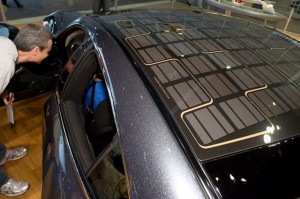 I think the solar roof was really just a sales gimmick to make people think the car was green.
I think the solar roof was really just a sales gimmick to make people think the car was green.
The Fisker had a sound generator that triggered automatically at speeds less than 25 MPH when running in pure EV mode to warn pedestrians of its approach. There are times in the Model S where it would be great to have some button you could trigger to make an obvious-but-not-rude sound. I’ve already been stranded behind slowly walking pedestrians that didn’t know I was following them in my Model S with the only option being a rude horn. Reports say the Fisker Karma can go from 0-60 in 5.9 seconds putting it in the same performance category as the Tesla Model S 60 and slower than the 85 and P85 versions. The Karma was also expensive with a starting price around $102K and going up to $116K, putting it in the class of the Porsche Panamera and the Tesla Model S.
Fisker The Company
 Fisker, like Tesla, was a high tech startup company, but unlike Tesla, they chose to use another startup’s battery technology to power the vehicle instead of going with a dominant brand in battery technology.
Fisker, like Tesla, was a high tech startup company, but unlike Tesla, they chose to use another startup’s battery technology to power the vehicle instead of going with a dominant brand in battery technology.
MUST SEE: Panasonic and Tesla Reach Agreement to Expand Supply of Automotive-Grade Battery Cells
Tesla chose to put 7,000+ time-proven Panasonic batteries in their Model S and upcoming Model X. I’m a big believer in startup companies that innovate and don’t bet their success on the success of another startup. That rarely ever works out well. It should be mentioned that early in the life of Tesla Motors the founder of Fisker actually worked for Tesla and later split off to start Fisker Automative amid lawsuits and controversy. Both Fisker and Tesla took green-energy loans from the government. Fisker borrowed $529M and never paid it back. Tesla borrowed $465M and repaid it in full and ahead of schedule. Fisker started shipping cars to customers in 2011 and got to just south of 2,500 cars before going out of business in 2013. During that time they were plagued with battery problems, reports of car fires and other issues. Tesla has shipped over 40,000 cars so far, admittedly not without their own exciting events along the way. Both Fisker and A123 have been purchased by a Chinese billionaire who hopes to revive the two companies, but given all the compromises above it seems unlikely that it will go well, but alas, there’s no stock to short there.
Tesla and Fisker Similarities?
The Tesla Model S and the Fisker Karma were both built by high tech startups in California but the companies took very different paths to producing green vehicles. Fisker focussed on design with an award-winning exterior but joined it with a mediocre powertrain configuration plagued by supplier and design issues. Tesla focussed on the engineering aspects of the car, using proven technology and making it better while still holding to a clean exterior design. The Fisker Karma is overly complex. It’s also slower and more expensive than the Model S. It has less range than the Model S, even with a gas-powered generator onboard. It is full of compromises like interior space and is not surprisingly no longer produced. It does however have a noise maker and better cup holders.
Summary
As Toyota has proven, hybrid vehicles can be tremendously successful if done right. The challenge is understanding the mission and staying true to that mission. Toyota set out to improve MPG for the masses by using hybrid technology in reaction to rising gas prices. Fisker set out to make a great looking car and only really thought cleanly on aesthetics but made a lot of compromises in execution. Tesla set out to make a true electric vehicle with no compromises and they are accomplishing that mission. Tesla has yet to reach the mass-market level of their aspirations but they are well on their way and already have a true electric vehicle that makes no compromises. For what it’s worth we made the 150 mile round trip to Mystic, CT with 100 miles of range left at the end. While we passed the only Supercharger nearby on the way down and back in Rhode Island, there was no reason to stop and it’s a lot more convenient to charge at home. I’ve made no compromises with my Model S.
Elon Musk
X account with 184 followers inadvertently saves US space program amid Musk-Trump row
Needless to say, the X user has far more than 184 followers today after his level-headed feat.
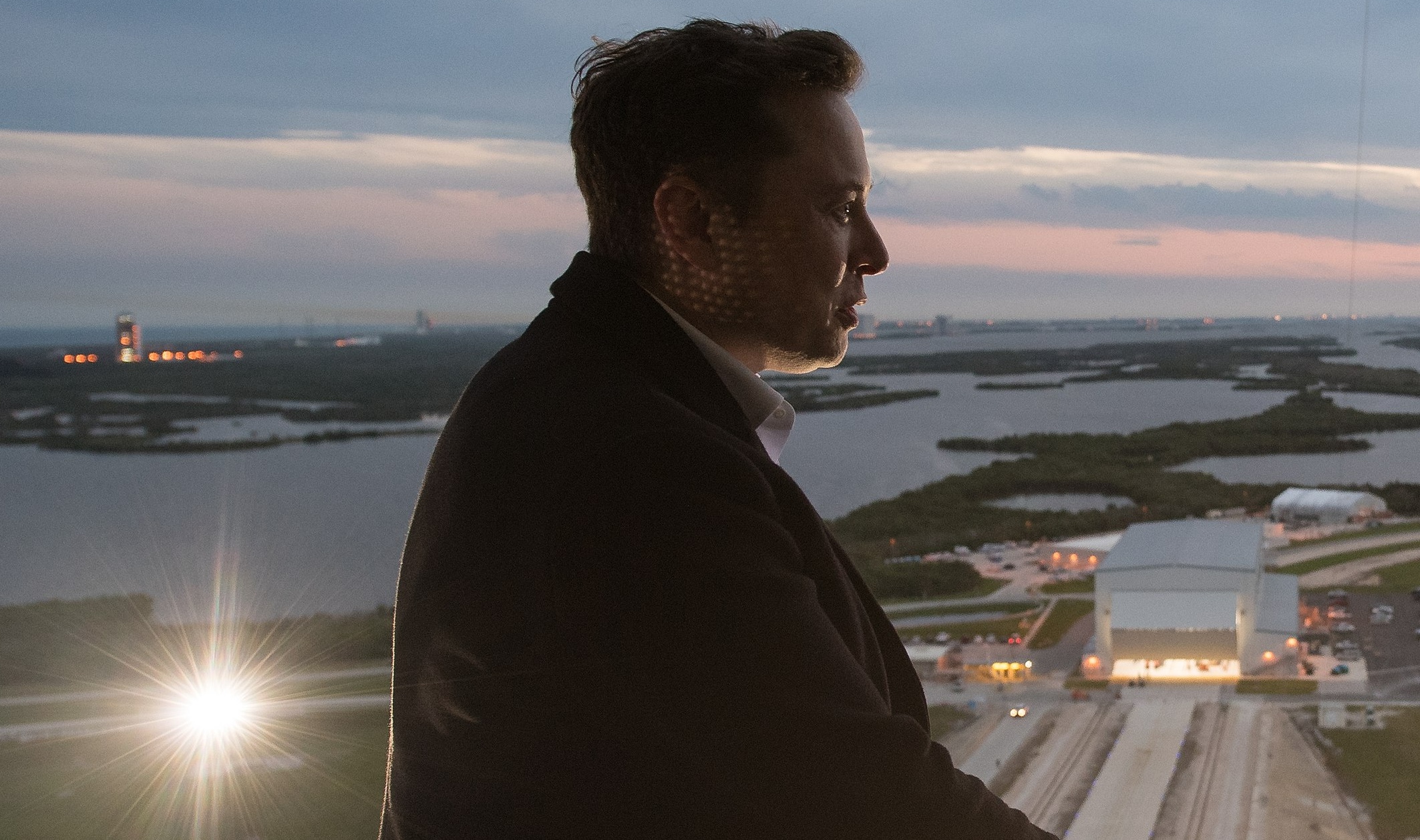
An X user with 184 followers has become the unlikely hero of the United States’ space program by effectively de-escalating a row between SpaceX CEO Elon Musk and President Donald Trump on social media.
Needless to say, the X user has far more than 184 followers today after his level-headed feat.
A Near Fall
During Elon Musk and Donald Trump’s fallout last week, the U.S. President stated in a post on Truth Social that a good way for the United States government to save money would be to terminate subsidies and contracts from the CEO’s companies. Musk responded to Trump’s post by stating that SpaceX will start decommissioning its Dragon spacecraft immediately.
Musk’s comment was received with shock among the space community, partly because the U.S. space program is currently reliant on SpaceX to send supplies and astronauts to the International Space Station (ISS). Without Dragon, the United States will likely have to utilize Russia’s Soyuz for the same services—at a significantly higher price.
X User to the Rescue
It was evident among X users that Musk’s comments about Dragon being decommissioned were posted while emotions were high. It was then no surprise that an X account with 184 followers, @Fab25june, commented on Musk’s post, urging the CEO to rethink his decision. “This is a shame this back and forth. You are both better than this. Cool off and take a step back for a couple days,” the X user wrote in a reply.
Much to the social media platform’s surprise, Musk responded to the user. Even more surprising, the CEO stated that SpaceX would not be decommissioning Dragon after all. “Good advice. Ok, we won’t decommission Dragon,” Musk wrote in a post on X.
Not Planned, But Welcomed
The X user’s comment and Musk’s response were received extremely well by social media users, many of whom noted that @Fab25june’s X comment effectively saved the U.S. space program. In a follow-up comment, the X user, who has over 9,100 followers as of writing, stated that he did not really plan on being a mediator between Musk and Trump.
“Elon Musk replied to me. Somehow, I became the accidental peace broker between two billionaires. I didn’t plan this. I was just being me. Two great minds can do wonders. Sometimes, all it takes is a breather. Grateful for every like, DM, and new follow. Life’s weird. The internet’s weirder. Let’s ride. (Manifesting peace… and maybe a Model Y.)” the X user wrote.
Lifestyle
Tesla Cybertruck takes a bump from epic failing Dodge Charger
The Cybertruck seemed unharmed by the charging Charger.
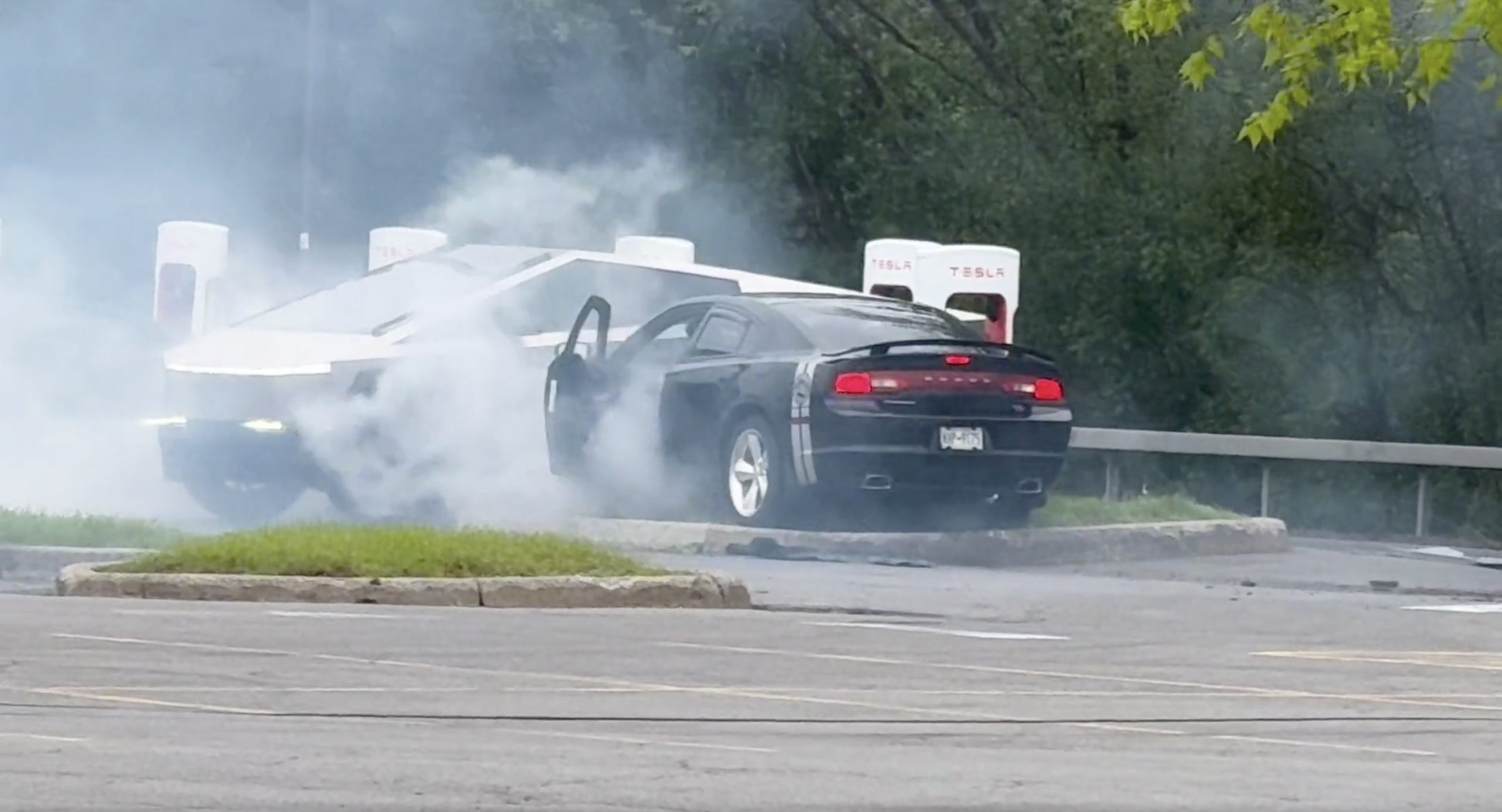
There comes a time in a driver’s life when one is faced with one’s limitations. For the driver of a Dodge Charger, this time came when he lost control and crashed into a Tesla Cybertruck–an absolute epic fail.
A video of the rather unfortunate incident was shared on the r/TeslaLounge subreddit.
Charging Charger Fails
As could be seen in the video, which was posted on the subreddit by Model Y owner u/Hammer_of_something, a group of teens in a Dodge Charger decided to do some burnouts at a Tesla Supercharger. Unfortunately, the driver of the Charger failed in his burnout or donut attempt, resulting in the mopar sedan going over a curb and bumping a charging Cybertruck.
Ironically, the Dodge Charger seemed to have been parked at a Supercharger stall before its driver decided to perform the failed stunt. This suggests that the vehicle was likely ICE-ing a charging stall before it had its epic fail moment. Amusingly enough, the subreddit member noted that the Cybertruck did not seem like it took any damage at all despite its bump. The Charger, however, seemed like it ran into some trouble after crashing into the truck.
Alleged Aftermath
As per the the r/TeslaLounge subreddit member, the Cybertruck owner came rushing out to his vehicle after the Dodge Charger crashed into it. The Model Y owner then sent over the full video of the incident, which clearly showed the Charger attempting a burnout, failing, and bumping into the Cybertruck. The Cybertruck owner likely appreciated the video, in part because it showed the driver of the Dodge Charger absolutely freaking out after the incident.
The Cybertruck is not an impregnable vehicle, but it can take bumps pretty well thanks to its thick stainless steel body. Based on this video, it appears that the Cybertruck can even take bumps from a charging Charger, all while chilling and charging at a Supercharger. As for the teens in the Dodge, they likely had to provide a long explanation to authorities after the incident, since the cops were called to the location.
Lifestyle
Anti-Elon Musk group crushes Tesla Model 3 with Sherman tank–with unexpected results
Ironically enough, the group’s video ended up highlighting something very positive for Tesla.

Anti-Elon Musk protesters and critics tend to show their disdain for the CEO in various ways, but a recent video from political action group Led By Donkeys definitely takes the cake when it comes to creativity.
Ironially enough, the group’s video also ended up highlighting something very positive for Tesla.
Tank vs. Tesla
In its video, Led By Donkeys featured Ken Turner, a 98-year-old veteran who served in the British army during World War II. The veteran stated that Elon Musk, the richest man in the world, is “using his immense power to support the far-right in Europe, and his money comes from Tesla cars.”
He also noted that he had a message for the Tesla CEO: “We’ve crushed fascism before and we’ll crush it again.” To emphasize his point, the veteran proceeded to drive a Sherman tank over a blue Tesla Model 3 sedan, which, of course, had a plate that read “Fascism.”
The heavy tank crushed the Model 3’s glass roof and windows, much to the delight of Led By Donkeys’ commenters on its official YouTube channel. But at the end of it all, the aftermath of the anti-Elon Musk demonstration ended up showcasing something positive for the electric vehicle maker.
Tesla Model 3 Tanks the Tank?
As could be seen from the wreckage of the Tesla Model 3 after its Sherman encounter, only the glass roof and windows of the all-electric sedan were crushed. Looking at the wreckage of the Model 3, it seemed like its doors could still be opened, and everything on its lower section looked intact.
Considering that a standard M4 Sherman weighs about 66,800 to 84,000 pounds, the Model 3 actually weathered the tank’s assault really well. Granted, the vehicle’s suspension height before the political action group’s demonstration suggests that the Model 3’s high voltage battery had been removed beforehand. But even if it hadn’t been taken off, it seemed like the vehicle’s battery would have survived the heavy ordeal without much incident.
This was highlighted in comments from users on social media platform X, many of whom noted that a person in the Model 3 could very well have survived the ordeal with the Sherman. And that, ultimately, just speaks to the safety of Tesla’s vehicles. There is a reason why Teslas consistently rank among the safest cars on the road, after all.
-

 Elon Musk1 week ago
Elon Musk1 week agoTesla investors will be shocked by Jim Cramer’s latest assessment
-

 Elon Musk3 days ago
Elon Musk3 days agoElon Musk confirms Grok 4 launch on July 9 with livestream event
-

 Elon Musk15 hours ago
Elon Musk15 hours agoxAI launches Grok 4 with new $300/month SuperGrok Heavy subscription
-

 News7 days ago
News7 days agoTesla Model 3 ranks as the safest new car in Europe for 2025, per Euro NCAP tests
-

 Elon Musk2 weeks ago
Elon Musk2 weeks agoA Tesla just delivered itself to a customer autonomously, Elon Musk confirms
-

 Elon Musk1 week ago
Elon Musk1 week agoxAI’s Memphis data center receives air permit despite community criticism
-

 Elon Musk2 weeks ago
Elon Musk2 weeks agoTesla’s Omead Afshar, known as Elon Musk’s right-hand man, leaves company: reports
-

 News2 weeks ago
News2 weeks agoXiaomi CEO congratulates Tesla on first FSD delivery: “We have to continue learning!”












